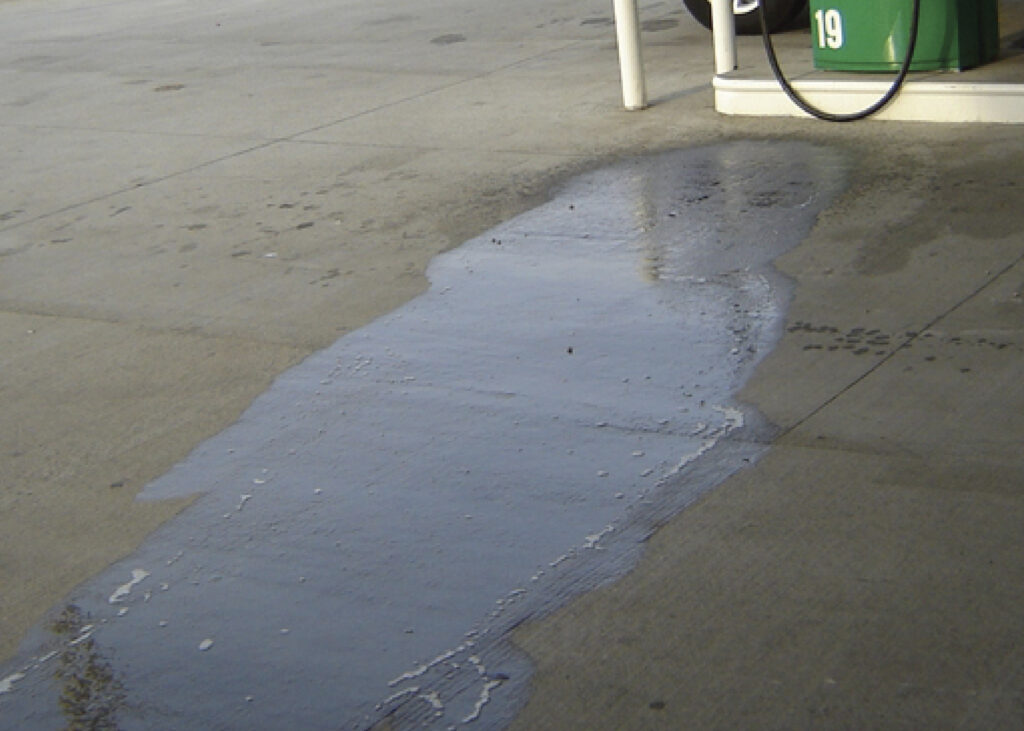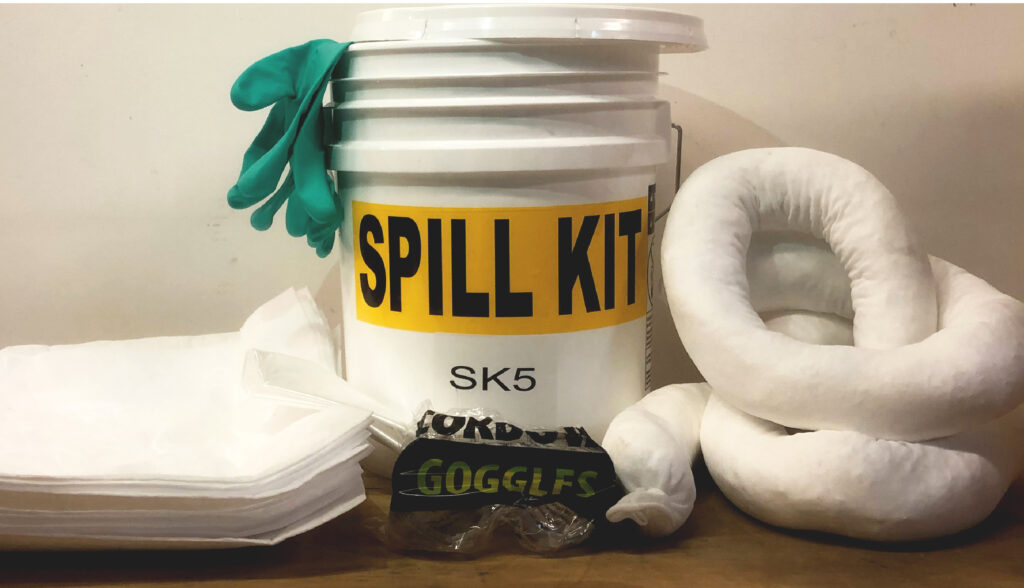
Identification, Causes, and Clean-up of Petroleum Spills
A one-gallon spill can cover approximately 50 square feet on an asphalt parking lot sloped at 5% and can travel 2 feet per second – or almost half a football field – in one minute.
Fuel spills can occur for multiple reasons: unattended customer fueling, latch-open device fails, fuel delivery issues, or accidents caused by a fueling customer. Automatic shut-off devices located in the dispenser nozzle and break-away hose couplings are the primary devices used to prevent spills during product dispensing. The “popping off” or “clicking off” experienced by most motorists filling a vehicle is the result of the automatic shut-off nozzle working as designed. Motorists may create “splash back”(small spills) if they attempt to dispense product into a tank which is already full. Additionally, petroleum product delivery (filling an underground storage tank) creates a risk for larger accidental spills and releases into the environment; these spills can be caused by operator error, faulty filling equipment, or faulty overfill prevention devices. Devices used for spill and overfill prevention during product delivery include spill buckets, overfill alarms, and automatic shut-off devices. Training for on-site operators, including specific procedures and response for tasks before, during, and after product delivery to an underground storage tank, can assist in the prevention and mitigation of releases due to spills.
On-site operators must be familiar with the various devices used for spill and overfill prevention, understand the required recordkeeping regarding a spill and/or release, and know the steps to take for assessing the severity of spills which dictates the appropriate response.
Comprehensive operator training on emergency spill response is critical. If you have any questions about whether the spill is too large to clean up by yourself, it likely should be escalated to the emergency response numbers identified by the site owner.
Be sure to evaluate and understand your specific state requirements for appropriate spill response. The regulations for spill response are specific to each state. Please refer to your site’s spill response plan for further information.
In the Midwest, contact the site manager IMMEDIATELY if a spill or overfill meets any of these criteria:
- Is greater than 25 gallons (5 gallons in Minnesota)
- Causes a sheen on surrounding surface water
- Impacts the surrounding property(ies)
- Penetrates the subsurface
- Appears to impact public health and safety
- An immediate or potential danger is possible (examples include product entering storm sewers or running off site)
Product Spill is not mobile (located in a puddle, etc.)
- Place oil dry (kitty litter) on top of the spill.
- Wait for product to be absorbed by the oil dry.
- Use a spark-proof shovel to move it to a containment device to be dried out before disposal.
Product spill is flowing toward drainage way
- Place absorbent material down slope of the spill. Gas station employees must know where drains and surface drainageways are located to quickly block and/or prevent spilled product from entering the drain.
- Absorbent material should be placed on top of the spilled product.
- Wait for product to be absorbed.
- Properly dispose of absorbent material.
A spill is too large if it cannot be managed with on-site spill response kits, or if it has not been contained and has entered the storm sewer, surface water (creek, stream, drainageway), or has entered another property.
In the event of a large spill…
- Protect the stormwater drains from any additional product by placing absorbent materials to intercept the product.
- Contact the fire department immediately to contain the release.
Recordkeeping is essential and required by federal law. Some gas locations have a UST Compliance Binder in which all records of reportable spills must be kept. All spills/overfills should be recorded, regardless of whether they include notification of emergency responders or regulatory entities.
Spill kits of various sizes should be kept on-site and restocked if any part of the bucket is used in response to a release. Spill kits – at a minimum – should contain a non-sparking shovel, rubber gloves, 5-gallon pail, 30 gallon drum with label, splash proof goggles, absorbent material such as kitty litter or peat, absorbent socks, absorbent pads, broom and dust pan.

To order a new spill kit or replacement parts, contact our petroleum inventory specialist, Christian Steinkamp, at 515-256-8814.
Additional guidance on spill response
IOWA: https://www.iowadnr.gov/environmental-protection/land-quality/underground-storage-tanks/ust-owners-operators/ust-release-reporting
NEBRASKA: https://www.nebraska.gov/rules-and-regs/regsearch/Rules/Fire_Marshal_State/Title-159.pdf
ILLINOIS: https://www2.illinois.gov/iema/Pages/default.aspx
KANSAS: https://www.kdheks.gov/tanks/owners.html
https://www.kdheks.gov/tanks/download/ust_overview.pdf
MISSOURI: https://dnr.mo.gov/env/hwp/docs/MissouriMustsforUSTs.pdf
